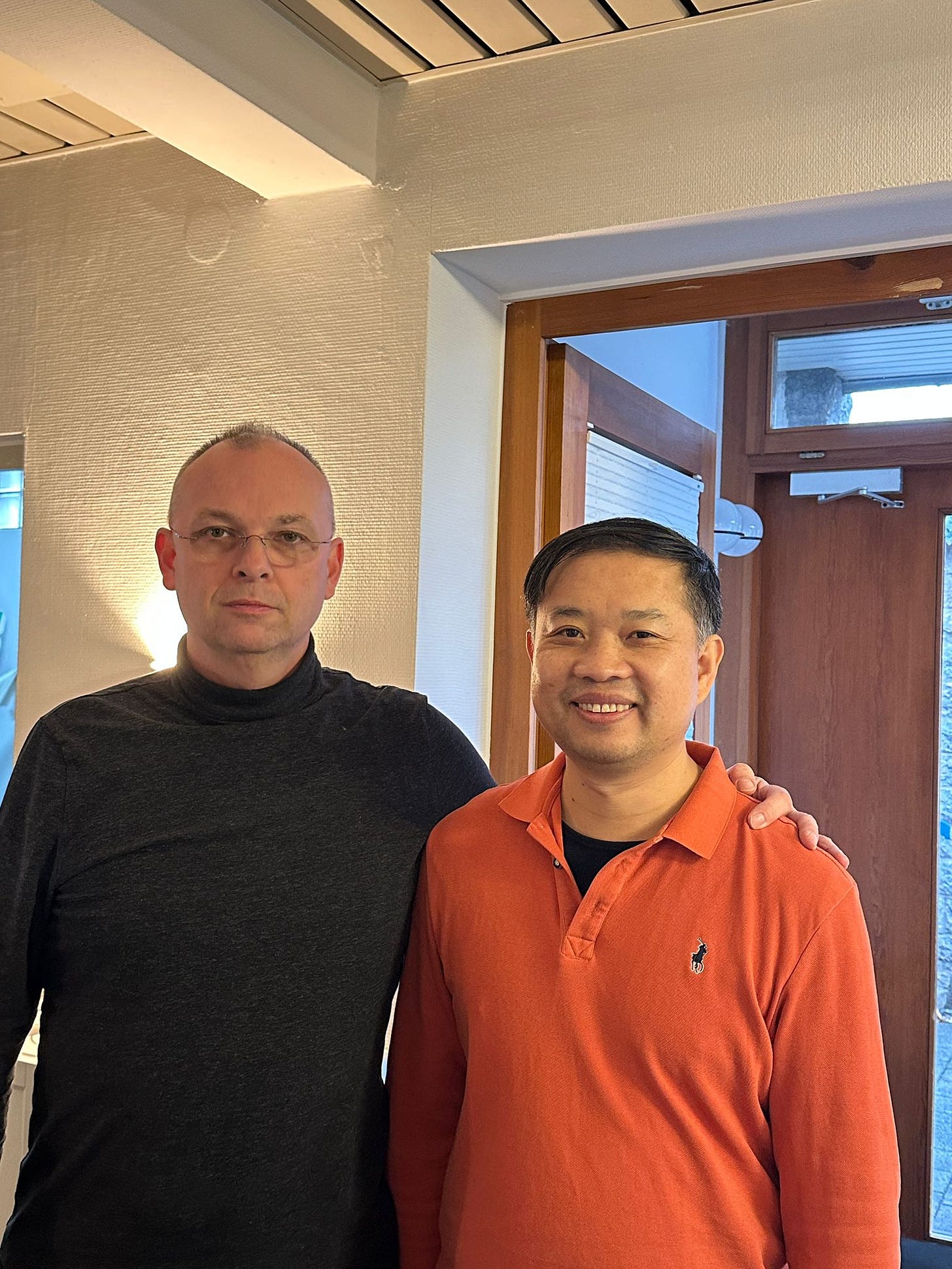The primary causes of cancer-related death can be summarized in two aspects:
Tumor growth and proliferation: Enlarging and multiplying tumors compress surrounding organs and nerves, leading to organ dysfunction and cancer pain.
Systemic inflammation: Cancer is often accompanied by inflammation, which can escalate to a systemic level, causing multi-organ failure and eventually death.
For late-stage cancer patients, the two key objectives of life-saving treatments are:
Reducing tumor size to alleviate pressure on surrounding tissues and organs.
Eliminating inflammation to prevent systemic complications such as multi-organ failure.
Key Findings from the Recent Clinical Treatment in Germany
During the treatment of two cancer patients in Germany (one with vaginal cancer and the other with peritoneal cancer), intratumoral injection of chlorine dioxide yielded remarkable results. This therapy not only rapidly killed tumor cells but also revealed a groundbreaking new mechanism: it eliminates inflammation within the tumor and in its surrounding area. This discovery is supported by two significant observations:
Tumor shrinkage observed: After injecting chlorine dioxide, the tumors in the treated patients noticeably shrank within a short period. This shrinkage is attributed not only to tumor necrosis but also to inflammation resolution.
Personal experience: I have personally used high-concentration chlorine dioxide over 50 times by injecting it into the muscle near my joints to treat arthritis. The treatment completely resolved inflammation in those areas, providing further evidence of chlorine dioxide’s ability to eliminate inflammation.
The Significance of This New Mechanism
This discovery is particularly crucial for late-stage cancer patients. Intratumoral injection of chlorine dioxide not only kills tumors rapidly but also eliminates inflammation in and around the tumor, effectively addressing two of the primary causes of cancer-related death:
Tumor shrinkage, which relieves pressure on organs, improving local conditions.
Inflammation resolution, which prevents systemic complications such as multi-organ failure.
As a result, this therapy not only significantly prolongs the survival of cancer patients but also offers a realistic chance for them to completely recover from the threat of cancer.
The Four Core Mechanisms of Intratumoral Injection of Chlorine Dioxide Therapy
Based on the latest clinical findings and research, I have summarized four core mechanisms of this therapy:
Directly killing cancer cells: Chlorine dioxide reacts chemically to quickly and effectively destroy cancer cells.
Disrupting tumor blood vessels: It cuts off the tumor’s blood supply, “starving” the cancer cells and causing extensive necrosis.
Eliminating inflammation around the tumor: This restores vital systemic functions, particularly the immune system, which may then refocus its efforts on suppressing the tumor.
Promoting wound healing: After the tumor is eradicated, chlorine dioxide accelerates the healing of affected tissues to restore their health.
With these four mechanisms, I am optimistic that intratumoral injection of chlorine dioxide therapy has the potential not only to cure cancer but also to prevent cancer-related deaths altogether.
Analysis Based on the Five-Factor Evaluation Framework
Applying my five-factor evaluation framework, intratumoral injection of chlorine dioxide therapy demonstrates distinct advantages in the following areas:
Inhibition Rate
The therapy achieves an inhibition rate comparable to surgery and goes further to outperform it. By increasing the dose, a single 5-minute injection can completely eliminate the tumor, making it faster and simpler than surgery.
Side Effects
Apart from manageable pain, intratumoral injection of chlorine dioxide has minimal side effects. On the contrary, it eliminates inflammation, which not only avoids harmful effects but also helps restore the immune system to its normal state, providing additional health benefits.
Drug Resistance
Chlorine dioxide kills both cancerous and normal cells indiscriminately, and this non-selective mechanism means that cancer cells cannot develop resistance to it. This ensures consistent effectiveness over time.
Sustainability
Chlorine dioxide reacts with organic matter in the body and decomposes into chloride ions and water with no toxic byproducts. Each injection takes mere minutes to administer, and the treatment can be repeated indefinitely without harmful accumulations or long-term toxicity.
Convenience
This therapy is simpler than a tumor biopsy. With the support of advanced equipment, intratumoral chlorine dioxide injections can be performed in clinics without the need for specialized surgical facilities. Patients can leave just a few hours after the procedure (once anesthesia wears off).
Conclusion: A Revolutionary Cancer Treatment
Based on the clinical data and the mechanisms of action, intratumoral injection of chlorine dioxide therapy shows unprecedented potential for curing cancer. It rapidly destroys tumors, reduces inflammation, and supports the recovery of systemic health, providing a comprehensive solution to life-threatening aspects of cancer.
Given these attributes, this therapy could fundamentally change the treatment of cancer, offering patients a chance not only for extended survival but also for complete freedom from cancer-related death. Its unique combination of efficacy, safety, and convenience marks it as a revolutionary breakthrough in the fight against cancer.





“ CHLORINE DIOXIDE ” — LOCAL I N J E C T I O N S -
T O T A L L Y, & E A S I L Y
C U R E S EVERYTHING
I N S T A N T L Y I N
C A N C E R …. !!!!!!!!!
Good to see you progressing on CD internationally, keep it up and up!